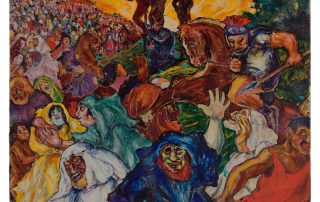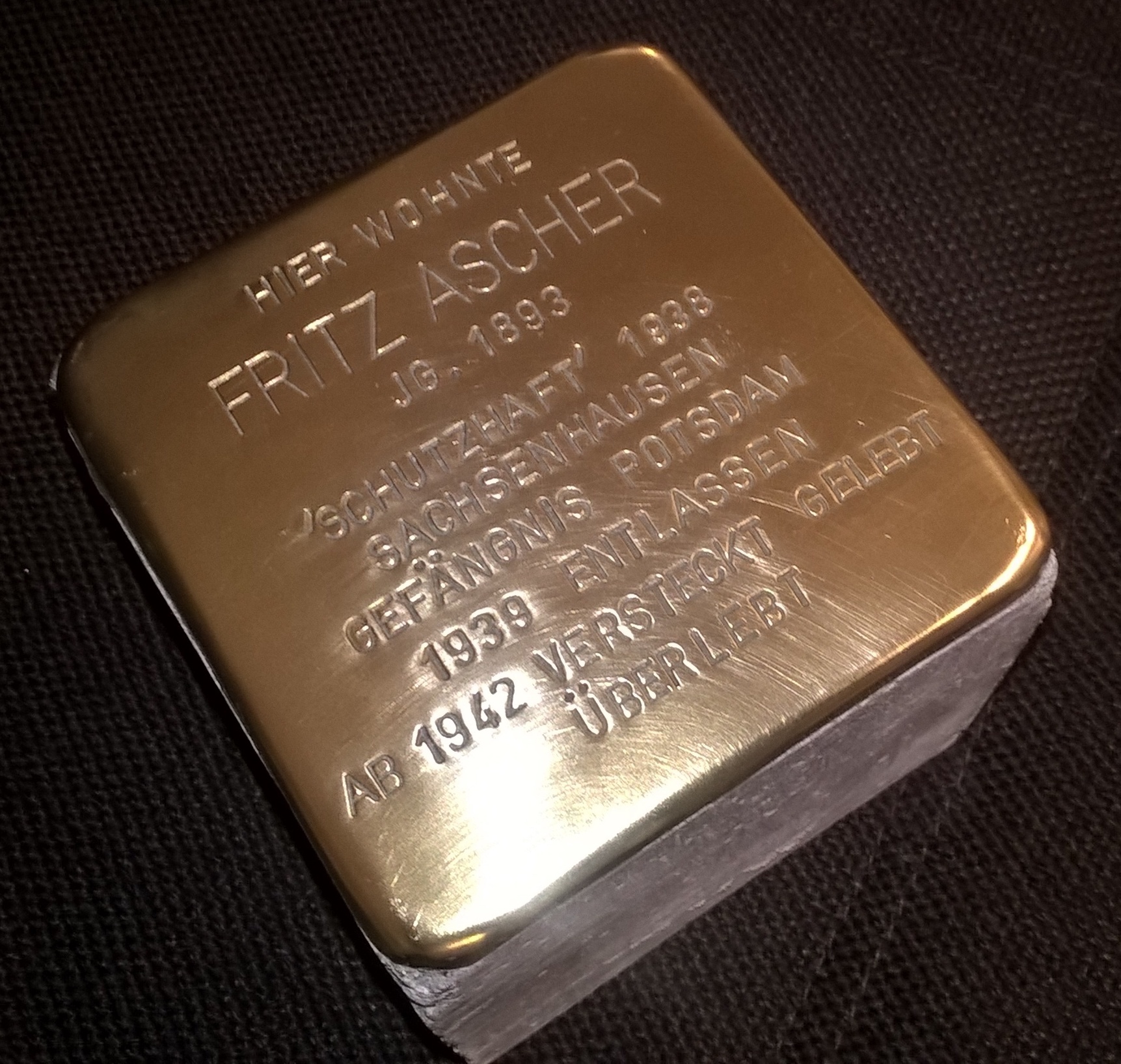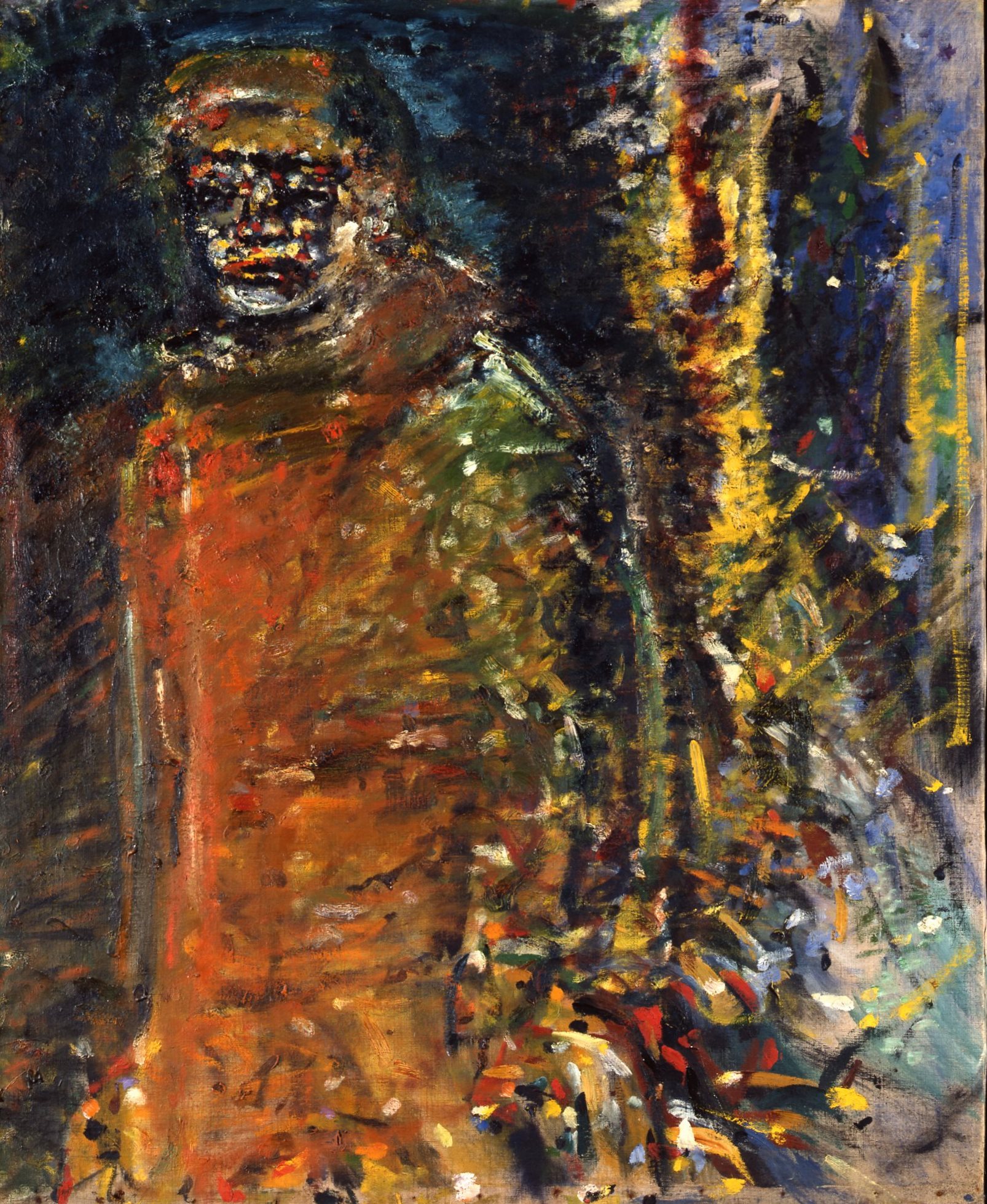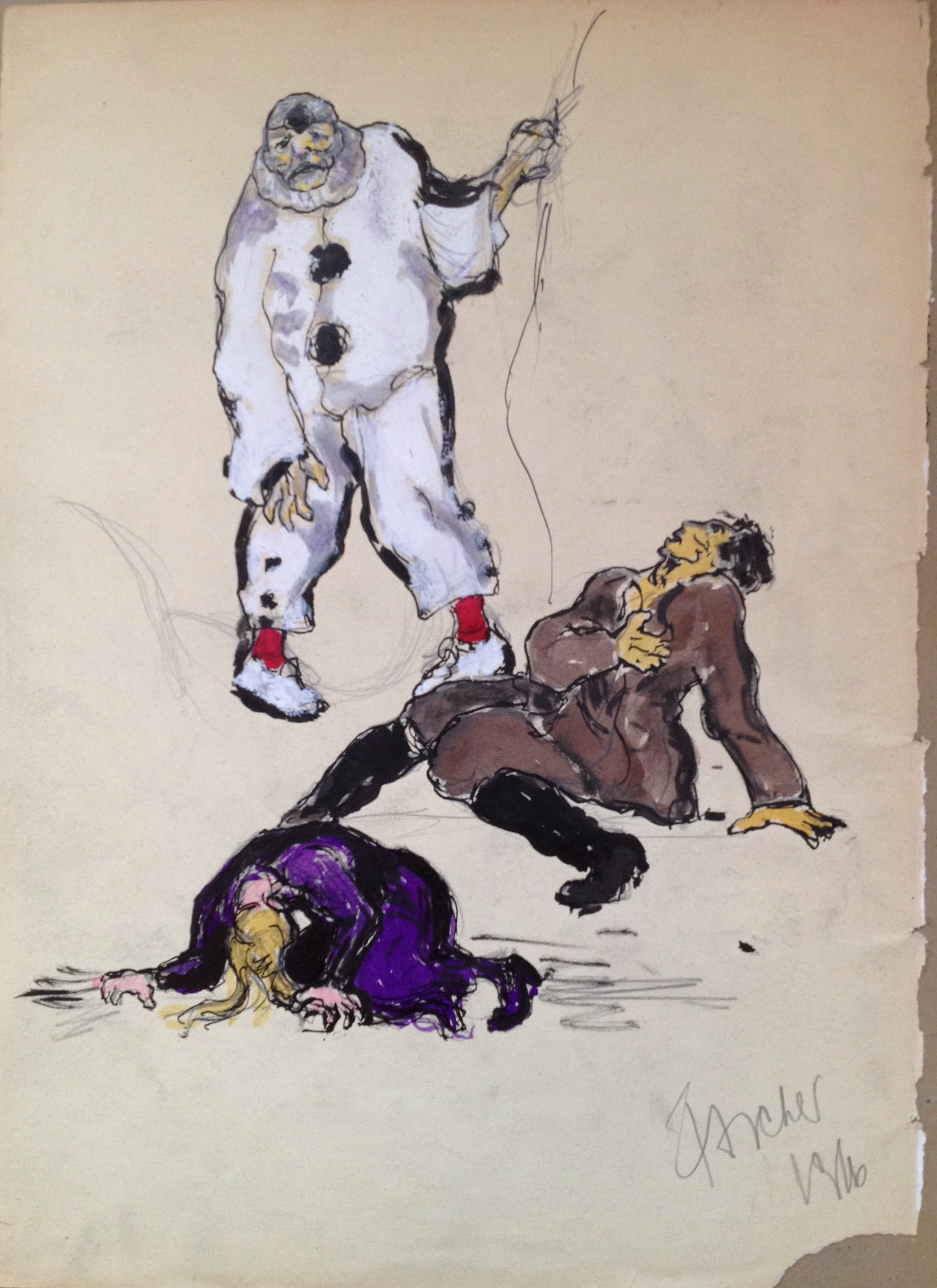Rachel Stern2019-02-15T10:25:48-05:00February 15th, 2019|Select Press Coverage|
"Finally Home with the Greats. An exhibition places the under-the-radar Fritz Ascher squarely in the canon of 20th-century German artists.” (scroll down for translation into German) ‘Golgotha’ (1915), by Fritz Ascher, in which inflections of Pieter Bruegel the Elder coalesce with James Ensor to create a scene of pandemonium and horror. ©Bianca Stock For those of us who consider themselves familiar with German Expressionism, the compelling new exhibition at New York University’s Grey Art Gallery, “Fritz Ascher: Expressionist,” makes us wonder why this artist hasn’t been on our radar screens. The 67 works of art on display, along with sketchbooks and documentary materials, may not quite qualify as a discovery, but they significantly [...]
Rachel Stern2018-12-04T11:50:09-05:00February 8th, 2018|Newsletter|
Dear Friends, Fritz Ascher is getting a “Stolperstein” (stumbling stone)! Please join us for the ceremony on Wednesday, February 21 at 11:00am at Niklasstr. 21/23 in Berlin-Zehlendorf Stolpersteine (stumbling stones) is a project of the artist Gunter Demnig. The project commemorates people who were persecuted by the Nazis between 1933 and 1945. Stolpersteine are concrete blocks measuring 10x10cm which are laid into the pavement in front of the last voluntarily chosen places of residence of the victims of the Nazis. Their names and fate are engraved into a brass plate on the top of each Stolperstein. In Berlin, thousands Stolpersteine were installed since 1996. Today, Stolpersteine can be found in 1099 German cities and in 20 European countries. (link) We [...]
Rachel Stern2018-12-04T12:27:33-05:00September 17th, 2017|Select Press Coverage|
Kunststück Wiebke Hölzer Die Masse stürmte um ihn her. / Starr, stumm, in sich blieb er versunken.« So beginnt das von dem Berliner Künstler Fritz Ascher verfasste Gedicht »Bajazzo«. Die Zeilen umschreiben treffend das Sichtbare auf seinem gleichnamigen Ölgemälde: Starr und wie in einem Sturm aus farbigen Pinselstrichen schreitet der Bajazzo, also die italienische Clownsfigur, nach links gewandt von einer abstrakt gehaltenen Umgebung ins Dunkel. Als erste Körperform nimmt der Betrachter den Kopf wahr, während der Rest des Körpers mit dem Hintergrund verschmilzt. Zwar reduziert Ascher die Mimik der Figur, aber gestaltet sie gleichzeitig ausdrucksstark - der Mund vermittelt das Gefühl von Traurigkeit und die Augen in Form schwarzer Höhlen symbolisieren als Spiegel der Seele das leere, einsame Innere. Die [...]
Rachel Stern2018-12-03T16:21:23-05:00January 12th, 2017|Exhibitions, Past Exhibitions|
The worldwide first Fritz Ascher Retrospective is on view at the Kunstsammlungen Chemnitz - MUSEUM GUNZENHAUSER from March 5 to June 18, 2017. (website link) The main focus of the presentation at the Kunstsammlungen Chemnitz - MUSEUM GUNZENHAUSER is on the artist's important early masterworks like "Golgatha" (1915), "Bajazzo and Artists" (ca. 1916) and "The Tortured" (ca. 1916). For the first time ever, Fritz Ascher’s “Golem” from the collection of the Jewish Museum Berlin will here be reunited with other works the artist created between 1913 and 1933. The Kunstsammlungen Chemnitz is home to an important collection of German Expressionism, dominated by artwork of the locally founded Expressionist group Brücke and especially Karl Schmidt-Rottluff, who grew up in Chemnitz, along [...]
Rachel Stern2018-12-04T12:45:14-05:00February 4th, 2016|Newsletter|
Dear Friends, As I am writing this newsletter, the snow is (still) melting here in New York after one of the largest snow storms in recent history. At the same time, Carnival is in the air - at least for our German friends. What better moment to introduce Fritz Ascher's clowns - a theme that occupied the artist throughout his career. It was certainly no coincidence that Ruggero Leoncavallo's opera "Pagliacci" (Clowns) was hugely popular in Weimar Republic Berlin - especially the performances with the best known Tenor of his time, Enrico Caruso, as Canio. Fritz Ascher, Bajazzo, 1916 In the opera, Canio, the head of a troupe of comedians, finds out that his wife Nedda has an affair with [...]







